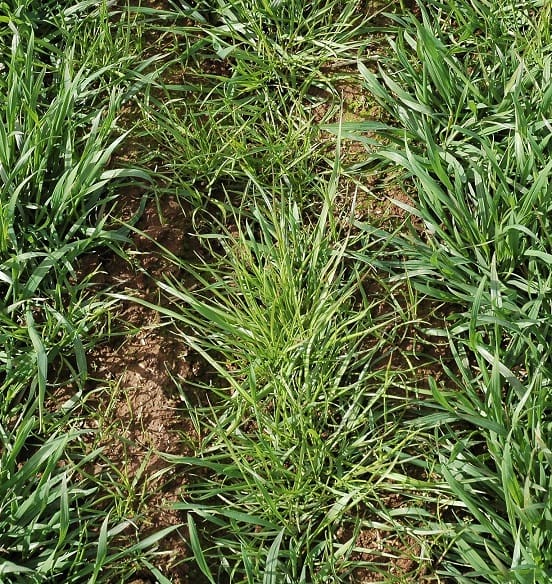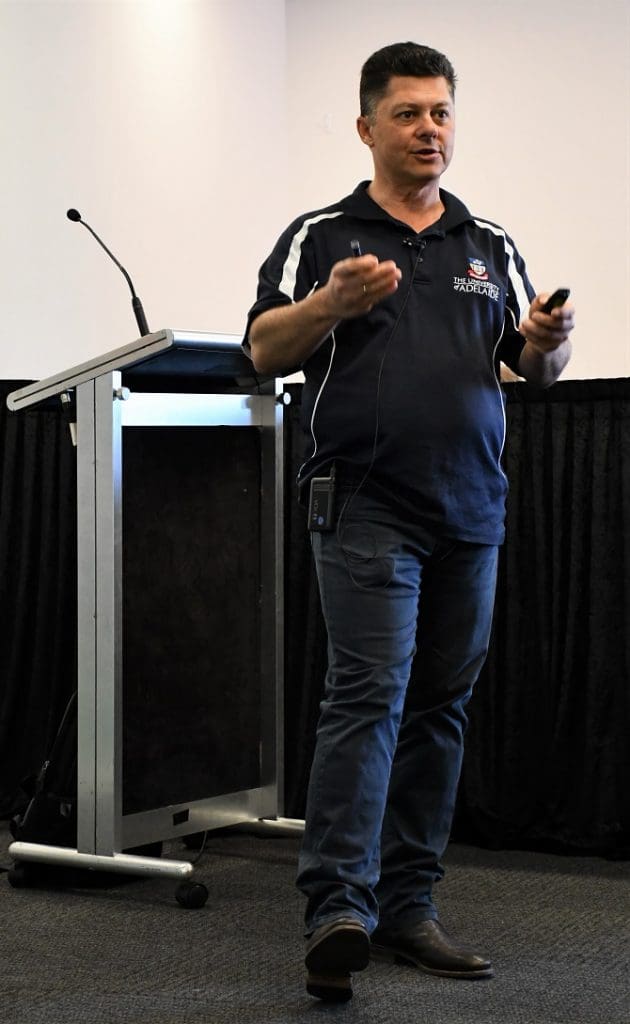A SURVEY of weeds growing in South Australia’s South-East and Mallee cropping regions has revealed concerning levels of resistance to some chemistries.

A survey of weeds, including ryegrass, growing in SA’s South-East and Mallee cropping regions has revealed concerning levels of resistance to some chemistries. (Photo: Emma Leonard)
Conducted through a Grains Research and Development Corporation (GRDC) research investment, the survey confirmed – among a number of findings – “alarming” levels of glyphosate resistance in ryegrass in the South-East and significant resistance issues to a range of herbicides in brome grass, barley grass and sow thistle in the Mallee.
A random weed survey was conducted across the Mallee and South-East in December 2017 by researcher Peter Boutsalis, from the University of Adelaide and Plant Science Consulting, who surveyed a total of 238 paddocks – 102 paddocks in the northern Mallee, 63 in the southern Mallee and 73 in the South-East.
Dr Boutsalis said the most prevalent weed species across that entire zone was ryegrass, followed by sow thistle.
Brome grass, barley grass and wild turnip were more common in the northern Mallee, while wild oats, wild radish and sow thistle were dominant in the South-East.
“Alarming levels of resistance to glyphosate were once again detected in the South-East, with 27 per cent of ryegrass samples exhibiting resistance, compared with 16pc in the previous survey in 2012,” Dr Boutsalis said.
“Glyphosate resistance was also detected in 4pc of ryegrass samples from the southern Mallee.”
Ryegrass from the South-East was also tested with paraquat, with 7pc of samples confirmed resistant.
Dr Boutsalis said also of concern was the ongoing widespread resistance in South-East ryegrass populations to active ingredients diclofop and pinoxaden (more than 80pc resistance in samples screened).
“And although trifluralin resistance in ryegrass was detected in 68pc, 14pc and 41pc of paddocks in the southern Mallee, northern Mallee and South-East respectively, these results reflect a reduction in trifluralin resistance in the South-East and little change in either Mallee region, compared with the previous survey,” he said.
Pre-emergent herbicide resistance
In the 2017 survey, additional pre-emergent herbicides were included in resistance screening, with resistance to Group J and K herbicides confirmed in ryegrass, predominantly in the South-East.
Out of 56 brome grass samples collected in the Mallee regions, on average half exhibited resistance to mesosulfuron-methyl. In barley grass, 41pc of samples exhibited resistance to mesosulfuron-methyl.
No resistance to imazamox-imazapyr, quizalofop or glyphosate was detected in brome or barley grass.
In wild oats, 10pc of the 31 collected samples exhibited resistance to clodinafop, with no resistance to mesosulfuron-methyl or triallate.
Group B resistance in sowthistle was highest in the Mallee where more than 90pc of samples were confirmed resistant, and 2,4-D resistance in sowthistle was highest in the South-East (25pc of samples resistant).
In the Mallee, no resistance to atrazine, diflufenican or 2,4-D was identified in wild turnip. Group B resistance was, however, identified in 23pc of samples to sulfonylureas and 16pc to imidazolinones.
Of the wild radish samples collected in the Mallee, 46pc were resistant to chlorsulfuron, 23pc to imazamox-imazapyr and 38pc resistant to 2,4-D. No resistance to diflufenican or glyphosate was detected.
Annual monitoring
Dr Boutsalis and his colleagues undertake annual surveillance of herbicide resistant weeds through the GRDC national investment which aims to determine the extent of costly herbicide resistance in weeds of cropping systems.
“The surveys provide resistance status information on a regional basis, informing growers’ weed management strategies,” he said.
In 2018, the southern region weed collection survey was conducted in SA’s Mid, Upper and Lower North regions, as well as Yorke Peninsula, and these samples are being screened for resistance. Additional surveys will be undertaken in Victoria, Tasmania and SA prior to the harvest of this year’s crop.
Testing for resistance
Meanwhile, Dr Boutsalis encourages growers who detect weeds that have survived herbicide applications to have those weeds tested in-season for herbicide resistance.
A ‘Quick Test’ – the only in-season test of its kind in which plants (grasses and some broadleaf weeds) are tested for herbicide resistance (or susceptibility) – can assist growers in understanding the extent of resistance on their properties.
“The Quick Test works on plants from seedlings to advanced tillering, as long as the plants are green and healthy,” he said. “The test usually takes about four weeks to complete.”
Determining the status of herbicide resistance provides growers with valuable information on the effectiveness of herbicides on target weeds, potentially preventing the costly use of ineffective herbicides and reducing the spread of herbicide resistance.
Source: GRDC
Herbicide resistance is a priority issue for southern region grain growers, as identified by the GRDC Southern Region Panel and the GRDC Southern Regional Cropping Solutions Network (RCSN).
The GRDC’s national investment in herbicide resistance research, development and extension is channelled through several research partners including the Australian Herbicide Resistance Initiative, the University of Adelaide and the University of Sydney.
Information on herbicide resistance and weed management is available via the GRDC’s Integrated Weed Management hub at http://www.grdc.com.au/IWMhub and the GRDC-supported WeedSmart resource centre at http://www.weedsmart.org.au.
Information about the Quick Test service is available on the Plant Science Consulting website at http://bit.ly/2Wh2X5v.
Weed resistance testing services are available via:
Peter Boutsalis, Plant Science Consulting, Adelaide (SA). Phone 0400 664460, email [email protected], web http://www.plantscienceconsulting.com.au
John Broster, Charles Sturt University, Wagga Wagga (NSW). Phone (02) 6933 4001, email [email protected], web https://www.csu.edu.au/weedresearchgroup/herbicide-resistance.


HAVE YOUR SAY